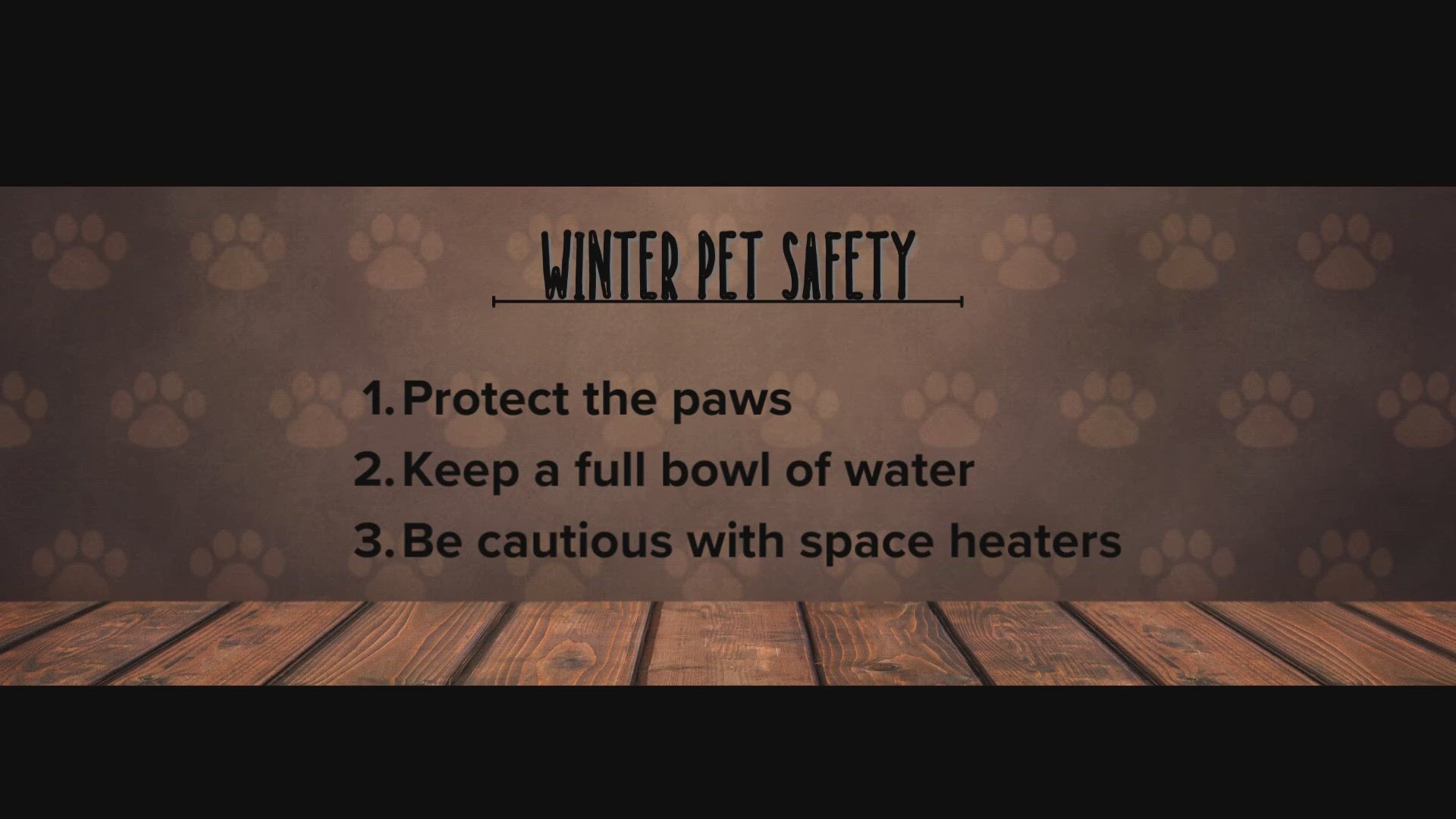DALLAS — As an arctic blast arrives in North Texas, pets must be kept safe and warm, too.
The Humane Society of North Texas has some tips for pet owners to ensure their pets have adequate shelter. The first piece of advice Humane Society of North Texas Clinic Medical Director Cynthia Jones has for pet owners is to keep pets indoors if possible.
"In these extreme conditions, protecting your pets as much as possible is vital. Pets should be brought indoors if at all possible. Dog houses (with elevated floors) to help block the wind are good, but additional insulation or a heat source should be provided. Make sure any outdoor housing provided is watertight….cold is bad, and cold is potentially deadly. Keep an eye on your pet’s water when a lengthy freeze is expected. Pets drink less during the winter months, but they still need a viable water source at all times."
Tips for Keeping Pets Safe:
Provide Adequate Shelter:
Ensure your pet has a warm and insulated shelter. This could be a well-insulated dog house or a cozy shelter with blankets for smaller pets. Make sure it protects them from wind, rain, and cold temperatures.
- Warm Bedding: Place warm bedding inside their shelter, such as blankets or straw. This will help pets stay insulated from the cold ground.
- Adjust Diet: In colder weather, pets may burn more calories to stay warm. Consider adjusting their diet to provide extra calories, but consult with your vet to determine the appropriate amount.
- Check Water Bowls: Ensure your pet always has access to unfrozen water. Check their water bowls regularly and replace frozen water with fresh, lukewarm water.
- Dress Appropriately: For some pets, especially smaller or short-haired breeds, consider dressing them in pet-friendly clothing designed for cold weather. This can help keep them warm during outdoor activities.
- Limit Outdoor Time: Minimize your pet's time outdoors during extremely cold weather. If possible, encourage them to exercise indoors or take shorter walks.
- Protect Paws: Cold weather can be harsh on your pet's paws. Consider using pet-safe paw balm to protect their pads from salt and ice. You can also use booties designed for pets.
- Regular Grooming: Keep your pet's coat clean and well-groomed. A clean and well-maintained coat provides better insulation against the cold.
- Check for Signs of Cold Stress: Be observant of signs of cold stress, such as shivering, lethargy, or seeking warm places. If you notice any concerning behavior, consult with your veterinarian.
- Visit the Vet: Schedule a check-up with your vet before the onset of winter. Ensure your pet is healthy and discuss any specific concerns or precautions needed based on their breed and health condition.
Additional Tips for Community Cats and Resources:
Caring for outdoor community cats, also known as feral or stray cats, requires a different approach than indoor pets. Here are some tips for providing support and ensuring their well-being:
- Shelter: Provide outdoor shelters for community cats. These shelters should be well-insulated, waterproof, and elevated to keep them dry and warm. You can use pre-made cat shelters or create your own using materials like Styrofoam, plastic totes, and straw.
- Feeding Stations: Establish feeding stations with regular and consistent food sources. Dry or wet cat food is suitable, and make sure to provide fresh water. Feeding at the same time each day helps create a routine for the cats.
For more tips on how to build a shelter, click here.

